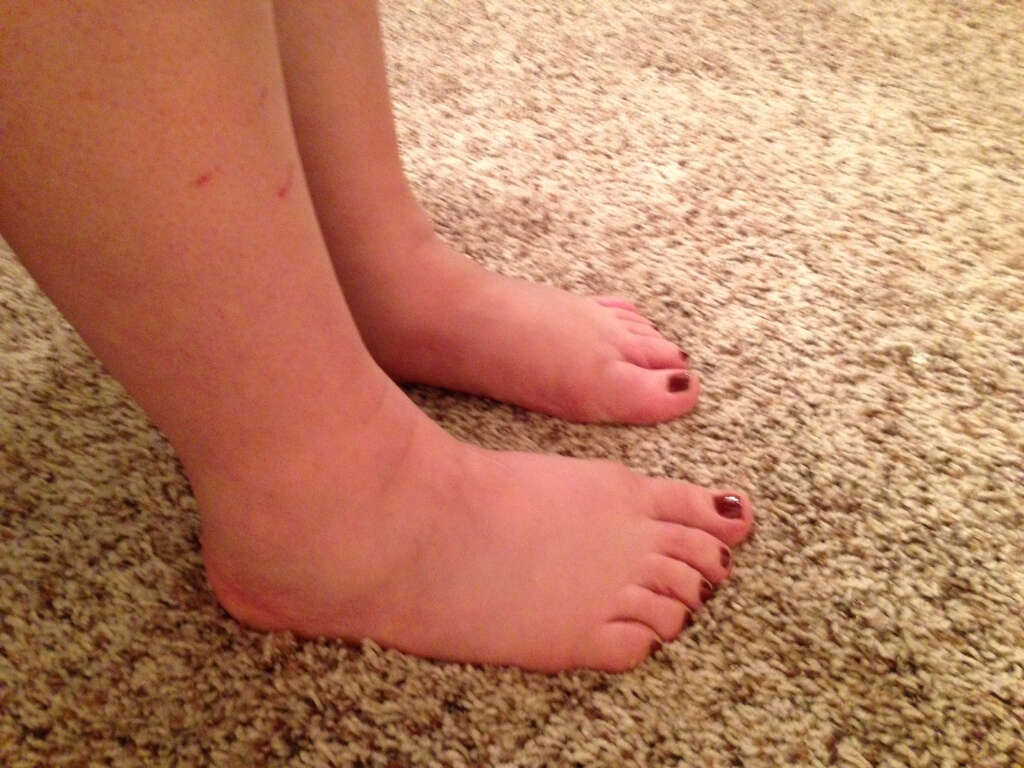10 Swollen Ankles Symptoms
 Article Sources
Article Sources
- 1. 'Swollen Ankles, Feet and Legs (oedema).' Nhs.uk, 19 Oct. 2017, www.nhs.uk/conditions/oedema/
- 2. 'Edema - Symptoms and Causes.' Mayo Clinic, 1 Dec. 2020, www.mayoclinic.org/diseases-conditions/edema/symptoms-causes/syc-20366493
- 3. 'Foot, Leg, and Ankle Swelling: MedlinePlus Medical Encyclopedia.' MedlinePlus - Health Information from the National Library of Medicine, medlineplus.gov/ency/article/003104.htm
Ankle swelling is a common condition in older people, during pregnancy and after long periods of standing or sitting in one position. Swollen ankles may be caused by diet or hormones, and in many cases, the buildup of fluid that causes ankles to swell is harmless and temporary.
However, swollen ankles may be a symptom of a larger issue. Heart disease, blood clots or injuries may also cause swelling. When a person notices their feet and ankles swelling, they should monitor future symptoms to determine if the cause is temporary or if they may need medical attention.1‘Swollen Ankles, Feet and Legs (oedema).’ Nhs.uk, 19 Oct. 2017, www.nhs.uk/conditions/oedema/

Puffy Feet and Ankles
Puffy skin may be the most visible symptom of swollen ankles, and swelling is commonly more noticeable in the lower extremities. The line from the calf to the base of the foot may have a more smoothed-over appearance as the swelling of the tissue beneath the skin obscures the shape of the ankle.
This puffiness is caused by a fluid buildup beneath the skin. The effects of gravity, age and hormones may cause more fluid than normal to accumulate in the area around the ankle. The skin may feel puffier and less solid.1‘Swollen Ankles, Feet and Legs (oedema).’ Nhs.uk, 19 Oct. 2017, www.nhs.uk/conditions/oedema/

Indentations
If a person is unsure if their ankles are swollen, they can press the skin around the ankle with their fingertips for several seconds. When ankles are swollen due to fluid, a small dimple remains in the skin after the pressure is eased.
This effect is called pitting, and it's common in people with swollen ankles. While it's possible for the ankle to swell without this effect, it may be an interesting symptom to observe.2‘Edema - Symptoms and Causes.’ Mayo Clinic, 1 Dec. 2020, www.mayoclinic.org/diseases-conditions/edema/symptoms-causes/syc-20366493

Shiny, Stretched Skin
As the skin around the swollen ankle stretches, it may take on a glossier or shinier appearance. This symptom may be easier to observe under direct lighting. The swollen skin may also appear to be stretched or slightly irritated.1‘Swollen Ankles, Feet and Legs (oedema).’ Nhs.uk, 19 Oct. 2017, www.nhs.uk/conditions/oedema/
The skin over the ankle may become itchy or uncomfortable if the swelling continues. While swollen ankles tend to be temporary, an affected person should see their doctor if symptoms persist.2‘Edema - Symptoms and Causes.’ Mayo Clinic, 1 Dec. 2020, www.mayoclinic.org/diseases-conditions/edema/symptoms-causes/syc-20366493

Sudden Onset
Ankles may gradually swell in response to diet or environmental factors. If a person sustains an injury, has a greater salt intake than usual or stands for long periods of time, the swelling may come on more suddenly.
Sudden swollen ankles without such a cause may be a symptom of a more serious condition. Pregnant women, for example, may expect some mild swelling in their ankles. However, if ankle swelling comes on suddenly and dramatically, it may be a sign of preeclampsia.3‘Foot, Leg, and Ankle Swelling: MedlinePlus Medical Encyclopedia.’ MedlinePlus - Health Information from the National Library of Medicine, medlineplus.gov/ency/article/003104.htm

Pain
In many cases, swollen ankles are painless. The skin around the area may be slightly uncomfortable, but the ankle itself doesn't typically hurt. This makes pain a useful symptom to watch when dealing with swollen ankles.
Pain in a swollen ankle may indicate an unknown injury, a lack of proper blood flow or an underlying condition. A person experiencing painful swollen ankles should call their doctor. Chest pain alongside swollen ankles may indicate a blood clot and is a reason to visit the hospital.2‘Edema - Symptoms and Causes.’ Mayo Clinic, 1 Dec. 2020, www.mayoclinic.org/diseases-conditions/edema/symptoms-causes/syc-20366493

Redness and Heat
It's common for swollen ankles to be shiny, stretched and puffy. If the skin becomes red, however, that may be a cause for concern. A swollen ankle that's red and hot to the touch may be more serious and may require medical attention.
Swollen, red skin may be a symptom of infection or injury. This may be caused by the swollen ankle, or the swelling and heat may have a common cause. In either case, a doctor's visit may be necessary.3‘Foot, Leg, and Ankle Swelling: MedlinePlus Medical Encyclopedia.’ MedlinePlus - Health Information from the National Library of Medicine, medlineplus.gov/ency/article/003104.htm

Swelling in One Ankle
Swollen ankles caused by environmental factors tend to affect both ankles simultaneously. If one ankle is showing signs of swelling, it's common for the opposite ankle to also be swollen. If the swelling is caused by an injury, however, swelling is likely to appear only on the injured side.
A person should see their doctor if they're experiencing swelling in only one ankle without an injury. Doctors may offer advice or an explanation as to why the swelling is asymmetrical.1‘Swollen Ankles, Feet and Legs (oedema).’ Nhs.uk, 19 Oct. 2017, www.nhs.uk/conditions/oedema/

Ease With Elevation
Swollen ankles without concerning symptoms may typically be managed at home. It's common for ankle swelling to dissipate over time, especially when the ankles are elevated. Raising the ankles on a pillow or soft surface above the heart may help the fluids drain from the area. Gentle exercise and comfortable shoes may also be helpful.
If the ankle swelling doesn't reduce with time and elevation, a person should seek medical advice. This may be a sign of blood clots.1‘Swollen Ankles, Feet and Legs (oedema).’ Nhs.uk, 19 Oct. 2017, www.nhs.uk/conditions/oedema/

Difficulty Walking
Difficulty walking is an uncommon but possible symptom of swollen ankles. The cause may be harmless, with stiff muscles from standing too long or a slight tenderness.
In some cases, however, difficulty walking on a swollen ankle may be a sign of a more serious illness. Blood clots in the legs may cause pain and severely swollen ankles. Persistent swelling may lead to reduced circulation that may make walking difficult. Urgent medical care may be needed.2‘Edema - Symptoms and Causes.’ Mayo Clinic, 1 Dec. 2020, www.mayoclinic.org/diseases-conditions/edema/symptoms-causes/syc-20366493

Breathing Problems
Swollen ankles caused by blood clots may be especially serious. In some cases, a blood clot in a swollen ankle may move to the lungs, causing life-threatening illness. The most obvious symptom of this complication is breathing troubles.
If a person with a swollen ankle struggles to breathe, experiences tightness in their chest while inhaling or feels short of breath, they should call an ambulance. External symptoms may include a blue tint to the lips or the stomach sucking in while inhaling.3‘Foot, Leg, and Ankle Swelling: MedlinePlus Medical Encyclopedia.’ MedlinePlus - Health Information from the National Library of Medicine, medlineplus.gov/ency/article/003104.htm









